Liveaboards – MV Scuba Adventure
When divers think of Thailand the first place that often they mention is Similans. But there are many more dive sites accessible in the South Andaman, which also offer the same diversity and topography as the North Andaman.
Some of these dive sites also have the advantage of being open for diving all year around as they have shelter and protection from the mainland.
South Andaman Dive sites can include:
Hin Daeng (Red Rock) and Hin Muang (Purple Rock):
Both of these sites are about 70 km south of Koh Lanta and offer the best of the South diving experiences. Here the visibility can be good, but the water is plankton rich so it attracts some of the larger marine life.
Hin Daeng is the deepest drop of in Thailand, with a wall descending to 70m+ on the south side of the site. It is visible from the surface in the form a three pinnacles that break the surface, these descend underwater to red soft coral covered walls and reef.
Hin Muang is a series of submerged pinnacles dropping down to 60m+, it is 200m in length and covered in purple colored soft corals.
The diversity of marine life on both sites ranges from the big palegics such as Manta and devil rays, Whale sharks and reef sharks, to small ornate ghost pipe fish, long nose hawkfish and nudibranchs.
Both sites are exposed during the monsoon season so are sometime inaccessible due to weather conditions.
This is a group of five islands about 25 km west of Koh Lanta. There are three dive sites here and it offers dramatic and colorful scenery. The reefs are hard coral which has soft corals and sea fans, the area has many swim throughs and caves.
Koh Haa Lagoon is a shallow, protected area that lies between 3 of the Islands, The central lagoon area is suitable for beginner divers and snorkellers and provides a safe, nursery-area for many juvenile fish species. You may see Porcupine Puffer Fish, Ghost Pipefish, Octopus and Hawksbill Turtles swimming amongst the corals
Koh Haa Cathedral is a series of large and spectacular, interconnected caverns and swimthroughs. The largest cavern has three chambers and is known as ‘The Cathedral’. The first two chambers are connected by a shallow swim through at about 9 metres. It is possible to surface inside the Cathedral and see the limestone stalactites looming from the high ceilings. Light floods in through the two large entrances and offers great photographic opportunities. The shallow area in front of the beach is packed with coral and is suitable for beginner divers. Look out for the coral formations that are several metres high.
Koh Haa Chimney at Ko Haa Neung is a tall, vertical chimney, often filled with small glassfish or sweeperfish, starting at 5m and going down to around 16m. Explore the arm that branches out to the east, bringing you out into a beautiful shallow chamber with several large exits. You can find banded sea snakes, lionfish, nudibranchs, frogfish, harlequin shrimps, many other crustaceans and beautiful cowries. Look for large schools of snapper and barracuda.
Phi Phi :
Phi Phi islands have many dive sites, but the most famous and rewarding are at the south and are two rock islands called the Bida’s, Nok and Nai.
There is also a wall near to Maya beach, made famous by the movie the Beach with Leonardo De Caprio, which offers good diving.
The diving offers walls and sloping reefs, with hard and soft coral, many large sea fans and anemones. Schools of jack fish, barracuda, snappers can be seen on all sites, with sea horses, ghost pipe fish and nudibranchs. Look out for leopard sharks in the sandy areas with stingrays, and in the shallow look for hunting black tip reef sharks.
Turtles both green and hawksbills can often be found at all sites but many are seen on Maya wall.
Shark Point and Anemone reef :
Located around 26km from Chalong bay these two dive sites are less than a km away from each other. Anenome reef is one submerged pinnacle and Shark Point is two pinnacles, with one slightly above the water line.
Both sites are covered in soft corals with gorgonian sea fans, barrel sponges and anemones, and they attract a large amount of marine life.
Leopard and bamboo sharks can be sighted here, along with tigertail sea horses, hawksbill turtles and cuttlefish. Schooling snapper, travalie and fusileers are common, with many lion fish, scorpion fish and different types of moray eels.
The name means flower island in Thai and the dive site is a limestone island with vertical walls descending to 24 to 28m in depth. The East side is the most dived and has two caves along its wall, there are many crevices, big sea fans, whip coral and tree corals.
The site offers a good variety of macro life, tiger tail sea horses, ghost pipe fish, nudibranchs, many types of shrimps and frog fish. Many white eyes morays are found together and under ledges bamboo sharks are common. The dive is normally a one way drift along the wall.
If you want to enjoy the best sites that Phuket all around the Andaman Sea can offer in a 7 day liveaboard trip join MV Scuba Adventure from November to May.
MARINE PARK RULES AND REGULATIONS
DO NOT
Collect anything except rubbish
Make loud noises, which disturb other people and wildlife.
Hunt, destroy, or do anything that harms plants, animals and the environment
Exceed 40m of depth if trained; entry level divers must not exceed 20m of depth.
Exceed no decompression limits
Dive in restricted areas
Feed any animals
Dive with gloves, (except on wreck dives and mooring line descent or ascent dives).
DO
Have a diving certification
Realise the significance of nature, in that we must share and learn to preserve it for ourselves and others.
Have a signaling device
Complete safety stops on every dive
Protect the environment with good buoyancy control
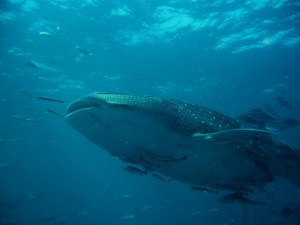
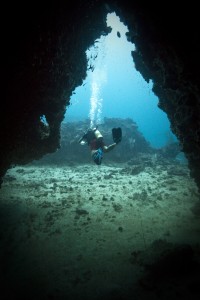
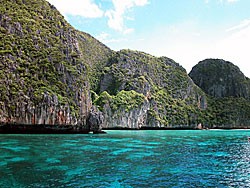
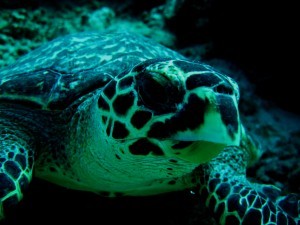
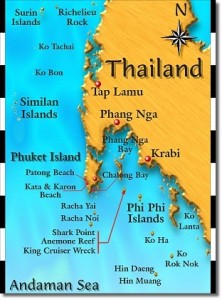





Scubacat Community